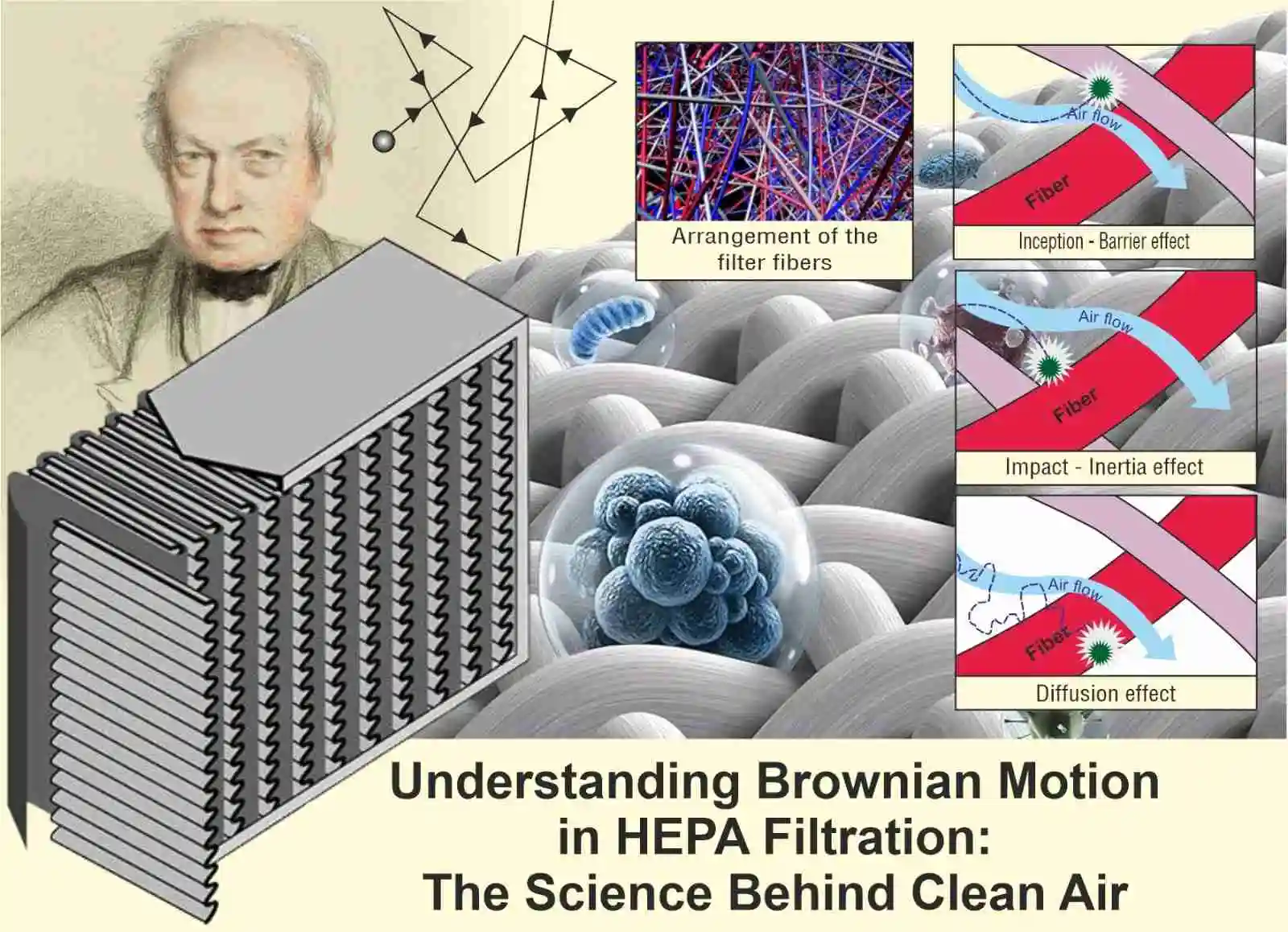Understanding Brownian Motion in HEPA Filtration: The Science Behind Clean Air
19 Sep 2024
Brownian motion describes the random movement of small particles suspended in a fluid (like air or water). This idea was first observed by a scientist named Robert Brown in 1827, who noticed that pollen grains moving in water have motion in a curving and zigzagging pattern. This movement happens because the water molecules collide with pollen grains, and they are pushed around randomly.
Brownian motion is principally an important concept in describing how HEPA (High-Efficiency Particulate Air) filters work effectively in purifying indoor air. Small particles, because of their microscopic size, are influenced easily by Brownian motion that makes them float or move randomly in zigzag pattern. This erratic movement increases the chances of these particles encountering the filter fibers.
How HEPA Filters Work
HEPA stands for High-Efficiency Particulate Air. HEPA filters are designed to capture very small particles from the air. They are commonly used in air purifiers, vacuum cleaners, and even in clean rooms where high air quality is crucial. To understand how these filters work, look at the three main ways they trap particles:
• Interception: Particles stick to the fibers of the filter when they come close enough.
• Impaction: Larger particles cannot change direction easily because of their size, so they collide with the filter fibers and get trapped.
• Diffusion: This is where Brownian motion comes into play. Tiny particles move erratically because of collisions with air molecules. This random movement makes it more likely that these small particles will hit and stick to the filter fibers.
Brownian Motion and HEPA Filters
Brownian motion is crucial for the filtration process, especially for very small particles.
Here’s how it helps:
Tiny Particles, Big Effect: Smaller particles, like dust or smoke, are influenced a lot by Brownian motion. Since these particles move in a random, zigzag pattern, they are more likely to bump into the filter fibers. This random movement increases the chance of these tiny particles being captured by the filter.
Better Capture Efficiency: HEPA filters are designed with a dense network of fibers that can trap particles of various sizes. Because Brownian motion makes small particles move unpredictably, it increases the chances that these particles will encounter the fibers and get stuck.
Improved Air Quality: By capturing these tiny particles, HEPA filters help to clean the air, removing allergens like pollen, dust, and smoke. This is especially important for people with allergies or respiratory issues.
Why It Matters
Understanding Brownian motion helps us understand why HEPA filters are so effective. It’s not just about the physical size of the particles but also about how they move. Brownian motion makes sure that even the smallest particles have a good chance of being caught by the filter, resulting in cleaner and healthier air.
Health Benefits: For people with allergies or asthma, HEPA filters can make a big difference. They reduce the number of airborne allergens, making breathing easier and helping to prevent allergic reactions.
Cleaner Homes and Workplaces: In places where air quality is crucial, like hospitals or laboratories, HEPA filters ensure that the air remains as clean as possible, reducing the risk of infection and maintaining a safe environment.
Conclusion:
Brownian motion, the random movement of tiny particles, plays a key role in making HEPA filters so effective. By understanding how these tiny particles behave and how they interact with the filter fibers, we can better appreciate the science behind cleaner air. HEPA filters use this natural movement to capture even the smallest airborne particles, helping us breathe easier and stay healthier. So, the next time you use a HEPA filter, you can thank the fascinating world of Brownian motion for helping to keep the air around you clean and fresh.
